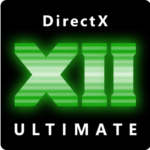DegustatoR
Legend
Why would Intel need to do that? AMD doesn't "cede control" of FSR2, they even continue improving it in 3.1 presumably beyond the 2.2.2 spec which went into DXSR "standard implementation". Nothing stops MS from licensing and adding current XeSS DP4a version in the exact same way, the only difference would be the licensing model.Would Intel want to completely hand over XeSS at that level to MS as in ceding all control of it going forward?
Nvidia would want that but they'd need to make DLSS compatible with other h/w for that and the choice of what they want more is theirs to make.Let's look at Nvida for instance, does Nvidia want to push DLSS as the base model?
One thing to note in all this is that DXSR won't solve the problem of developers still using IHV's APIs because a) there's still FG which isn't a part of that and will still require IHV provided SDK implementation and b) a new upscaler which won't fit into DXSR API (say it would need a different set of inputs from the game) will go the same route DLSS/XeSS/FSR took previously. Trying to sell DXSR as if it will solve all these issues is misleading. And that's not even mentioning the fact that there are these pesky Vulkan and Linux.



